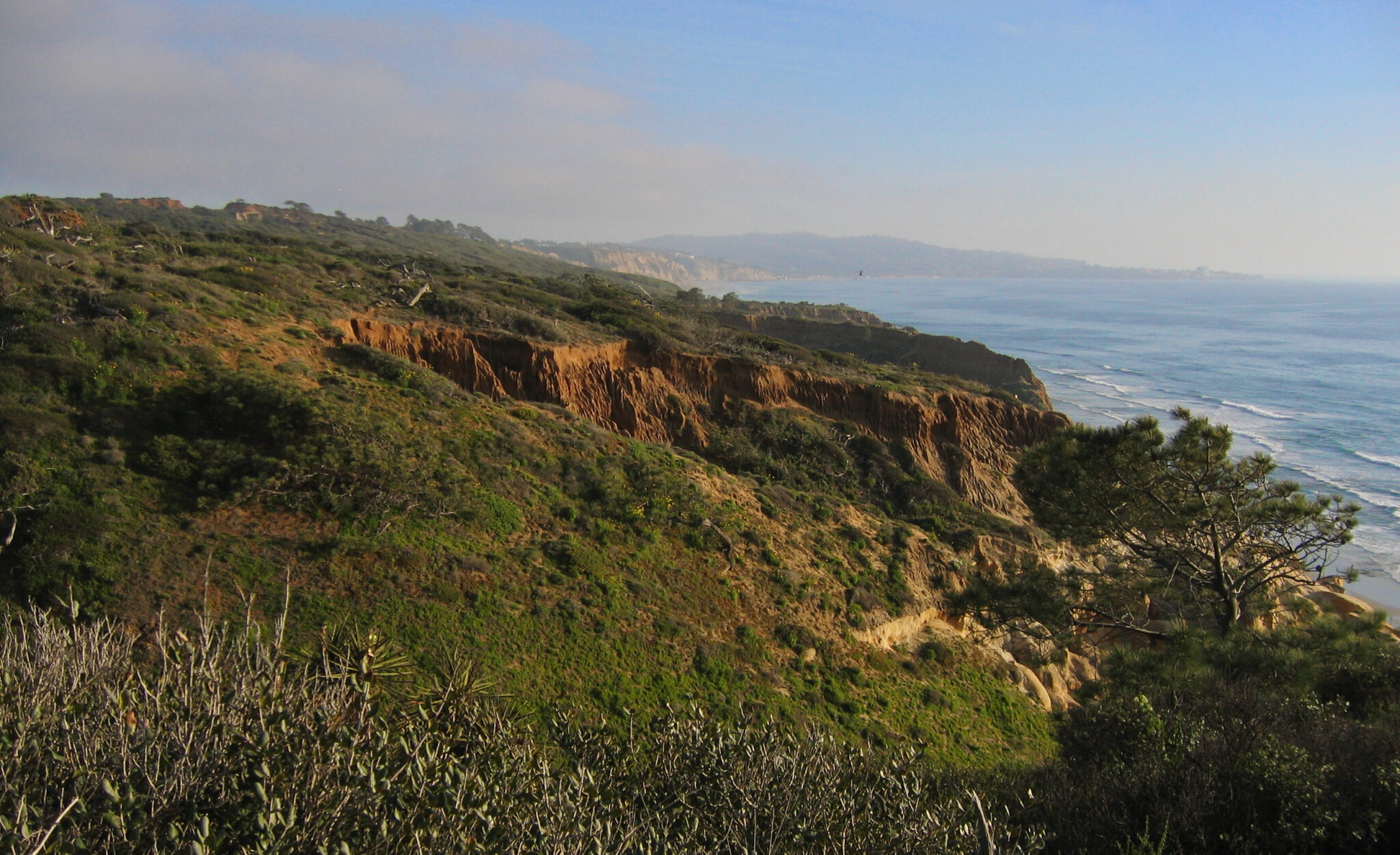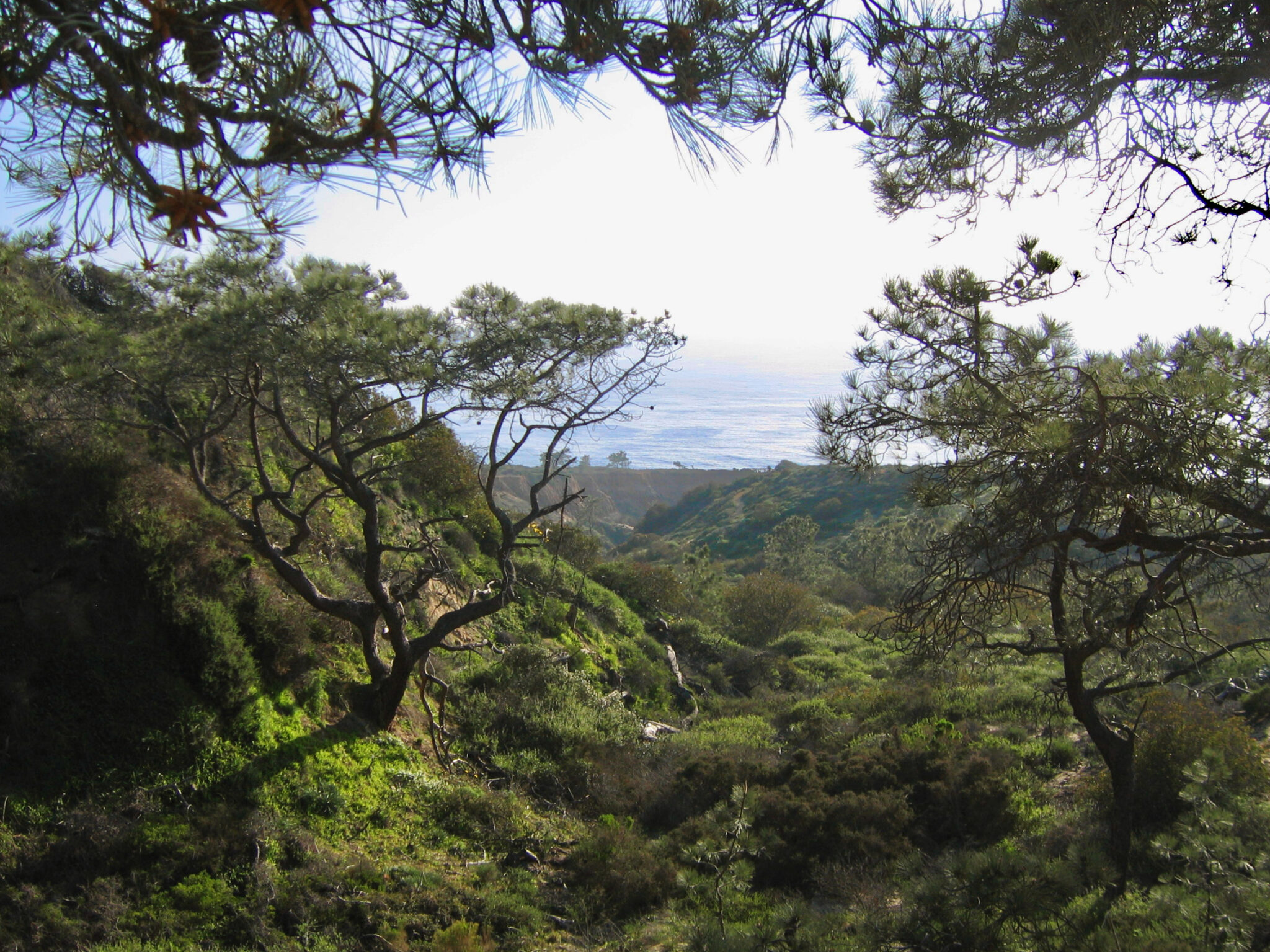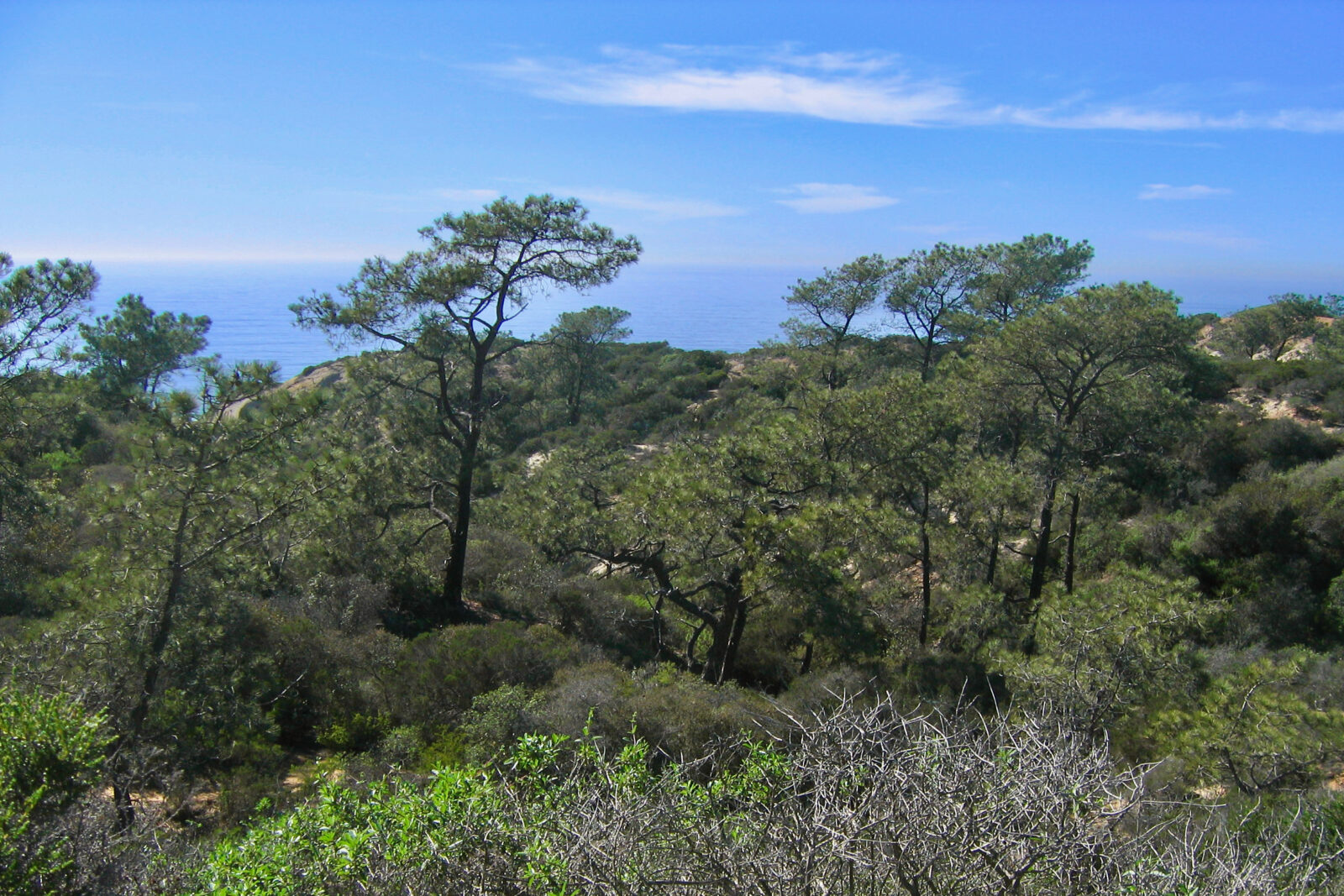 This edition of Treehuggers International originally aired on Dec. 7, 2008, on KBZT FM 94/9 in San Diego.
This edition of Treehuggers International originally aired on Dec. 7, 2008, on KBZT FM 94/9 in San Diego.
A native San Diegan and California State Parks ranger, Darren Smith serves as the Senior Environmental Scientist at California State Parks, though at the time this show was recorded in 2008 Darren was the Natural Resources Program Manager for Torrey Pines State Natural Reserve. One of San Diego County’s most iconic places, the state reserve is one of two native habitats for the Torrey Pine, or Pinus torreyana, the rarest of pine species in the United States.
While nursery-grown Torrey Pines are frequently found as ornamentals along the San Diego and Orange county coastlines and can grow to immense size, the trees have only two native habitats: along the La Jolla coast north of its namesake glider port and world-famous golf course, and 180 miles away (!) on Santa Rosa Island in the Channel Islands of Southern California, protected since 1980 as Channel Islands National Park. And that’s it – those two places.
Numerous invasive threats face Torrey Pines State Natural Reserve, and despite its location along a surprisingly wild, if brief, stretch of coastal Southern California, the reserve is beset on three sides by the encroaching urbanization of the most expensive real estate in the U.S. Like so many other protected parks and special places, Torrey Pines has become an “island” of conservation as development encroaches upon it and then bypasses it, though the Los Peñasquitos lagoon and wetland on the reserve’s northeast flank relieves some of the immediate pressure.
To the west the reserve faces the immensity of the Pacific Ocean, and the coastal fog which the Torrey Pine depends upon to keep its ecosystem hydrated throughout the year. But as our climate warms and lasting, seasonal fogs become less frequent and less dense, the already-limited range of San Diego’s most revered tree is in danger of vanishing – a remnant of the similarly vanishing native Southern California coastal ecosystem.
Located on a narrow plateau with cliffs overlooking Torrey Pines State Beach to the west and I-5 and Los Peñasquitos lagoon to the east, the reserve includes over 2,000 acres of cliffs, beaches, and chaparral habitat. Migrating seabirds are a common site at the reserve, along with bobcat, fox, skunk, coyote, rabbit, a variety of cactus, and an abundance of mature coastal chaparral.
The park didn’t start off at its current size. After seeing development advancing from Del Mar from the north and La Jolla to the south, legendary San Diego preservationist George Marston led the first effort to preserve what became the reserve’s original footprint as a San Diego city park in 1899. Philanthropist Ellen Browning Scripps later bought land adjoining Torrey Pines and donated it to the city to increase the park’s size, and after naturalist Guy Fleming’s visit to the park in 1916 he pushed for greater preservation before ultimately becoming District Superintendent for the Southern California State Park System.
By 1959, Torrey Pines had become a state natural reserve, and 1,500 additional trees were added to the park’s acreage in 1970. The park’s name was changed to Torrey Pines State Natural Reserve in 2007.
Torrey Pines State Natural Reserve photos © 2008 Tommy Hough, all rights reserved.



